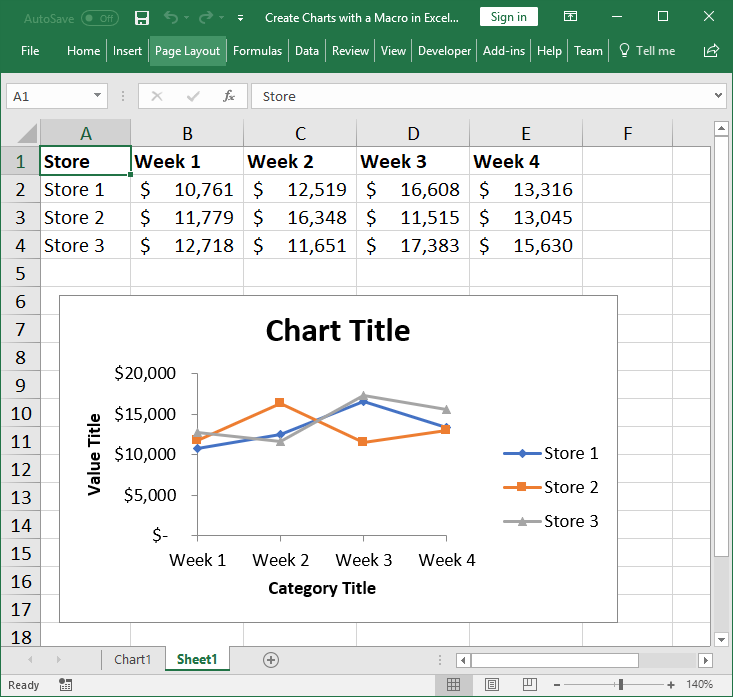
Excel is an incredibly powerful tool for data analysis and manipulation, but did you know that you can take your productivity to the next level by using macros? Macros are a series of commands that can be executed with a single click, allowing you to automate repetitive tasks and save time.
In this article, we'll explore the best macros for maximum productivity in Excel, including how to create and use them. Whether you're a beginner or an advanced user, you'll learn how to harness the power of macros to streamline your workflow and achieve more in less time.

What are Macros in Excel?
Macros are a series of commands that can be recorded or written in Visual Basic for Applications (VBA) code. They allow you to automate tasks, such as formatting data, creating charts, and performing calculations. Macros can be run by clicking a button, pressing a keyboard shortcut, or by using a formula.
There are two types of macros in Excel: recorded macros and VBA macros. Recorded macros are created by recording a series of actions, such as formatting data or creating a chart. VBA macros, on the other hand, are written in VBA code and offer more flexibility and customization.
Benefits of Using Macros in Excel
Using macros in Excel can have a significant impact on your productivity. Here are some of the benefits of using macros:
- Save time: Macros can automate repetitive tasks, freeing up time for more important tasks.
- Increase accuracy: Macros can perform tasks with precision and accuracy, reducing the risk of human error.
- Improve efficiency: Macros can streamline your workflow, allowing you to complete tasks faster and more efficiently.
- Enhance productivity: Macros can automate tasks that would normally take up a lot of time, allowing you to focus on more important tasks.
Best Macros for Maximum Productivity
Here are some of the best macros for maximum productivity in Excel:
1. AutoFormat Macro
The AutoFormat macro is a simple but powerful macro that can save you a lot of time. This macro formats a range of cells with a specific format, such as bold font, italic font, or a specific color.

To create an AutoFormat macro, follow these steps:
- Open the Visual Basic Editor by pressing Alt + F11.
- In the Editor, click "Insert" > "Module" to insert a new module.
- Paste the following code into the module:
Sub AutoFormat()
Selection.Font.Bold = True
Selection.Font.Italic = True
Selection.Font.Color = vbBlue
End Sub
- Click "Run" > "Run Sub/UserForm" to run the macro.
2. AutoSum Macro
The AutoSum macro is a useful macro that can save you time when working with numbers. This macro automatically sums a range of cells and inserts the formula into a new cell.

To create an AutoSum macro, follow these steps:
- Open the Visual Basic Editor by pressing Alt + F11.
- In the Editor, click "Insert" > "Module" to insert a new module.
- Paste the following code into the module:
Sub AutoSum()
Selection.Formula = "=SUM(" & Selection.Address & ")"
End Sub
- Click "Run" > "Run Sub/UserForm" to run the macro.
3. Chart Creator Macro
The Chart Creator macro is a powerful macro that can save you time when creating charts. This macro creates a chart based on a range of cells and inserts the chart into a new worksheet.

To create a Chart Creator macro, follow these steps:
- Open the Visual Basic Editor by pressing Alt + F11.
- In the Editor, click "Insert" > "Module" to insert a new module.
- Paste the following code into the module:
Sub ChartCreator()
Dim chart As Chart
Set chart = Charts.Add
chart.ChartType = xlColumnClustered
chart.SetSourceData Source:=Selection
chart.Location xlLocationAsNewSheet
End Sub
- Click "Run" > "Run Sub/UserForm" to run the macro.
How to Create and Use Macros in Excel
Creating and using macros in Excel is easy. Here are the steps:
- Open the Visual Basic Editor: Press Alt + F11 to open the Visual Basic Editor.
- Insert a new module: Click "Insert" > "Module" to insert a new module.
- Write the macro code: Write the macro code in the module.
- Save the macro: Save the macro by clicking "File" > "Save".
- Run the macro: Run the macro by clicking "Run" > "Run Sub/UserForm".
- Assign a keyboard shortcut: Assign a keyboard shortcut to the macro by clicking "Developer" > "Macros" and selecting the macro.
- Use the macro: Use the macro by pressing the keyboard shortcut or by clicking the macro button.




FAQs
What is a macro in Excel?
+A macro is a series of commands that can be recorded or written in Visual Basic for Applications (VBA) code. It allows you to automate tasks, such as formatting data, creating charts, and performing calculations.
How do I create a macro in Excel?
+To create a macro in Excel, open the Visual Basic Editor by pressing Alt + F11. Insert a new module by clicking "Insert" > "Module". Write the macro code in the module and save the macro by clicking "File" > "Save".
How do I use a macro in Excel?
+To use a macro in Excel, run the macro by clicking "Run" > "Run Sub/UserForm". You can also assign a keyboard shortcut to the macro by clicking "Developer" > "Macros" and selecting the macro.
By mastering the best macros for maximum productivity in Excel, you can take your productivity to the next level and achieve more in less time. Whether you're a beginner or an advanced user, macros can help you automate repetitive tasks, save time, and improve efficiency. So why not give it a try? Start creating and using macros today and see the difference for yourself!






![Free ebook]Mastering Excel Macros Bundle: Lessons 1](https://1.bp.blogspot.com/-W9od939T3Wc/XlvSaWMl6RI/AAAAAAAABdU/ZjuQORDMqgIc2SGIZDwjb6Ee0-RMMh9uQCLcBGAsYHQ/s1600/2020_03_01_22.18.45.jpg)

![[Free ebook]Mastering Excel Macros: Object Variables (Book 6)-Mark](https://1.bp.blogspot.com/-TaAm_O2pyb0/XjV9f7s6JOI/AAAAAAAAGeQ/kLeyIpbRljk8p4JWz8G_rPDe-aIfPqlFwCLcBGAsYHQ/s16000/2020_02_01_20.25.59_edit.jpg)


